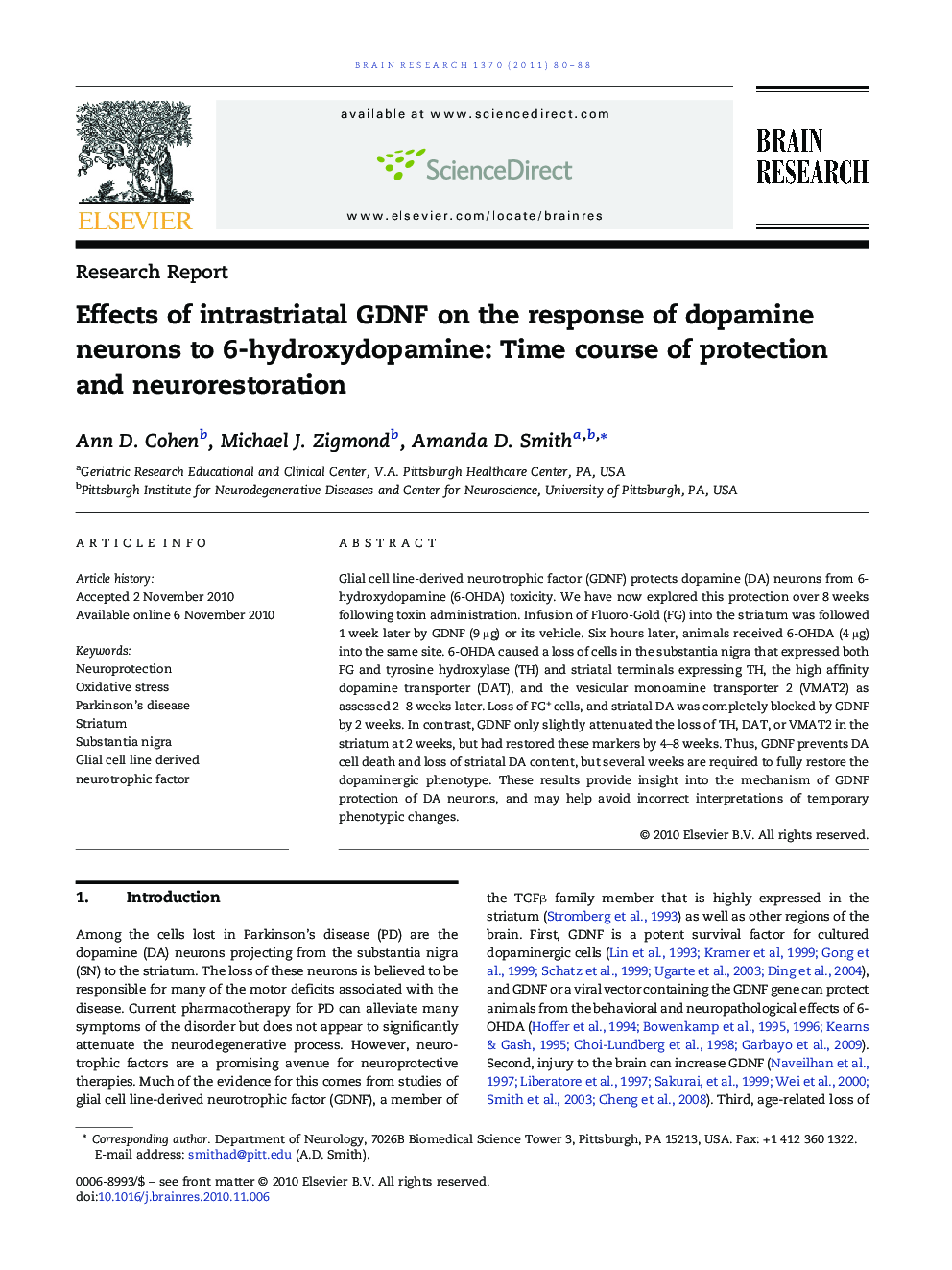| Article ID | Journal | Published Year | Pages | File Type |
|---|---|---|---|---|
| 6265252 | Brain Research | 2011 | 9 Pages |
Glial cell line-derived neurotrophic factor (GDNF) protects dopamine (DA) neurons from 6-hydroxydopamine (6-OHDA) toxicity. We have now explored this protection over 8 weeks following toxin administration. Infusion of Fluoro-Gold (FG) into the striatum was followed 1 week later by GDNF (9 μg) or its vehicle. Six hours later, animals received 6-OHDA (4 μg) into the same site. 6-OHDA caused a loss of cells in the substantia nigra that expressed both FG and tyrosine hydroxylase (TH) and striatal terminals expressing TH, the high affinity dopamine transporter (DAT), and the vesicular monoamine transporter 2 (VMAT2) as assessed 2-8 weeks later. Loss of FG+ cells, and striatal DA was completely blocked by GDNF by 2 weeks. In contrast, GDNF only slightly attenuated the loss of TH, DAT, or VMAT2 in the striatum at 2 weeks, but had restored these markers by 4-8 weeks. Thus, GDNF prevents DA cell death and loss of striatal DA content, but several weeks are required to fully restore the dopaminergic phenotype. These results provide insight into the mechanism of GDNF protection of DA neurons, and may help avoid incorrect interpretations of temporary phenotypic changes.
Research HighlightsâºGDNF prevents DA cell death via 6-OHDA but this requires 6-8 weeks to become apparent. âºAfter injury, loss of phenotypic markers may overestimate neuronal death. âºAfter GDNF to 6-OHDA-treated rats, DA levels remain though synthetic enzymes decline.
